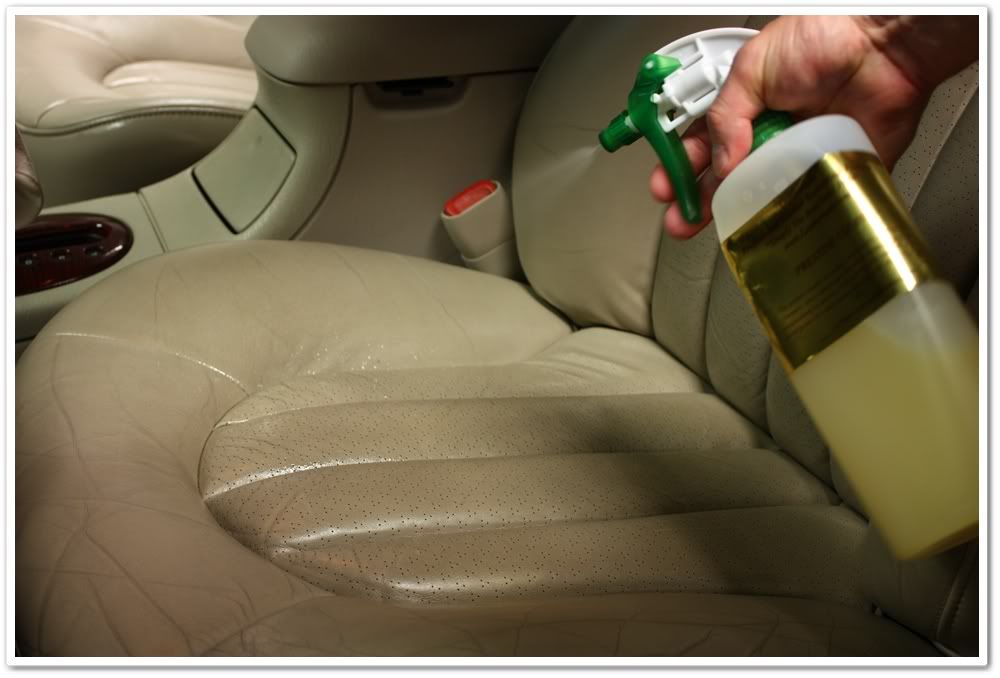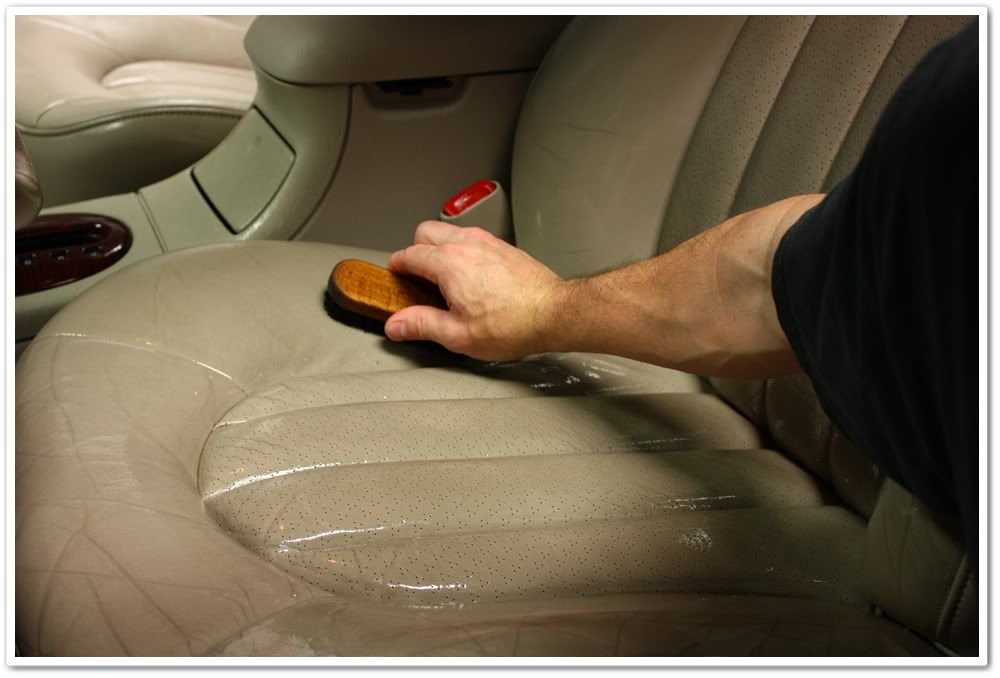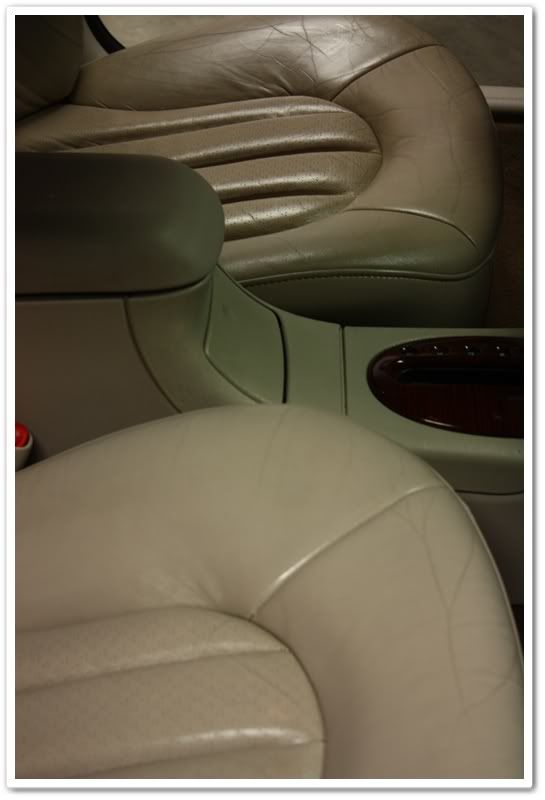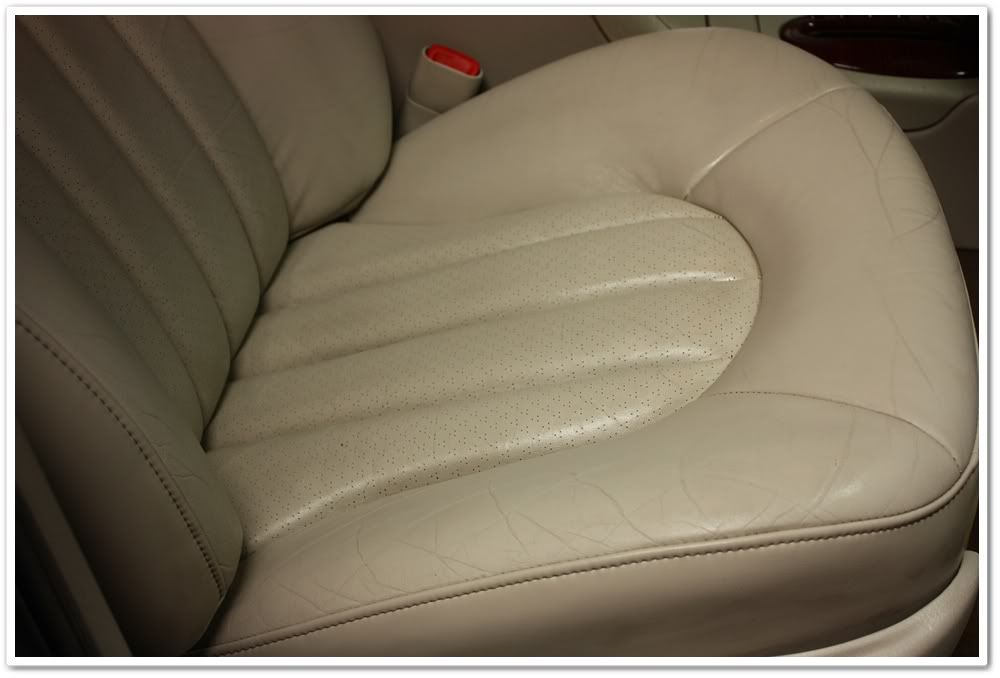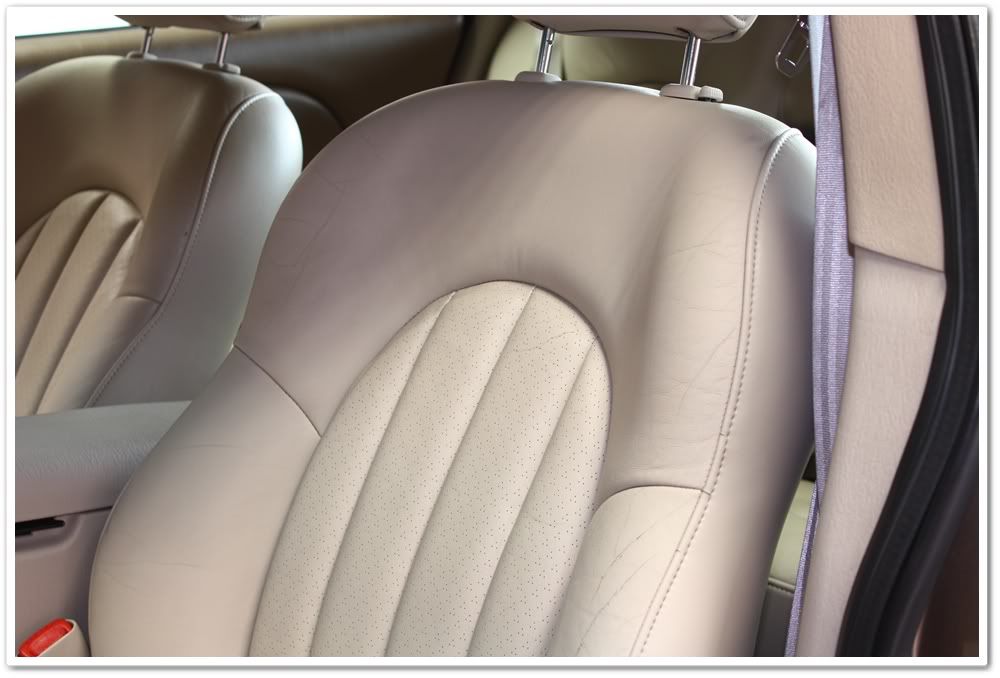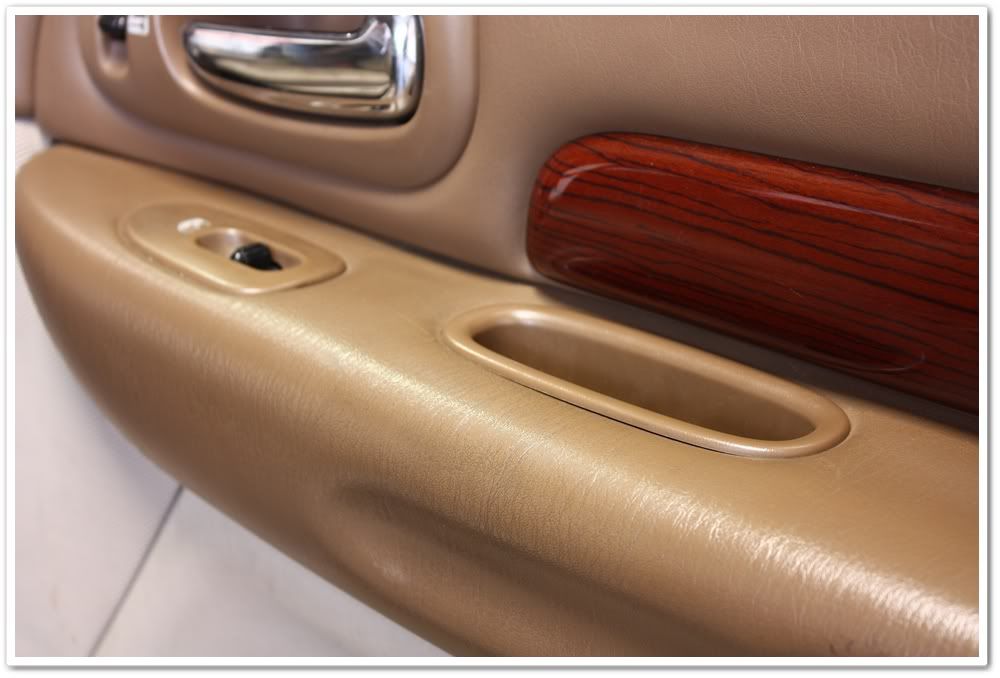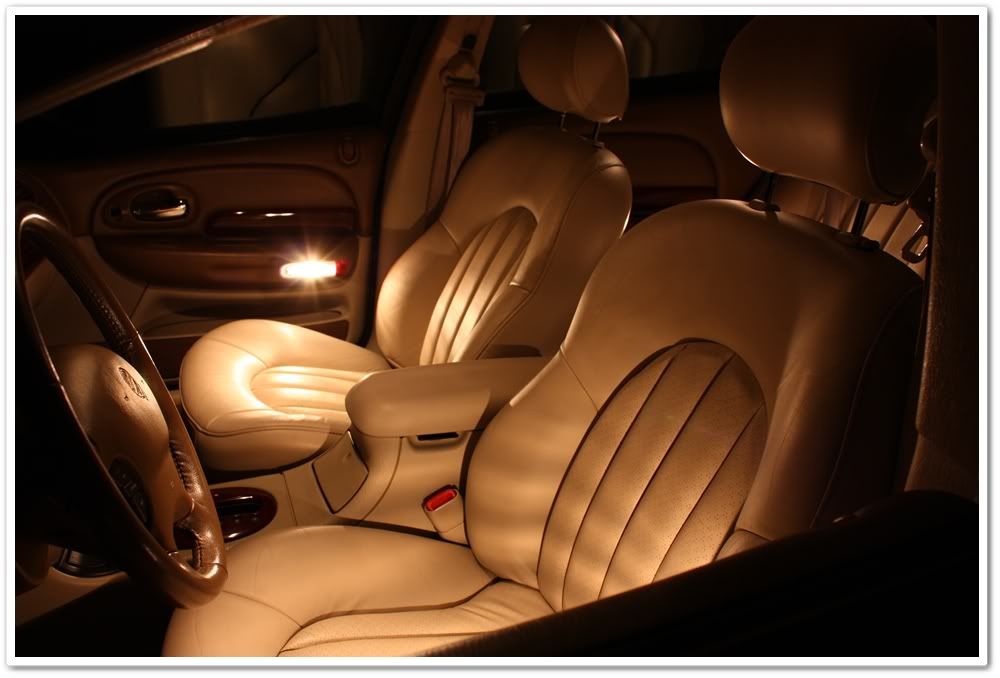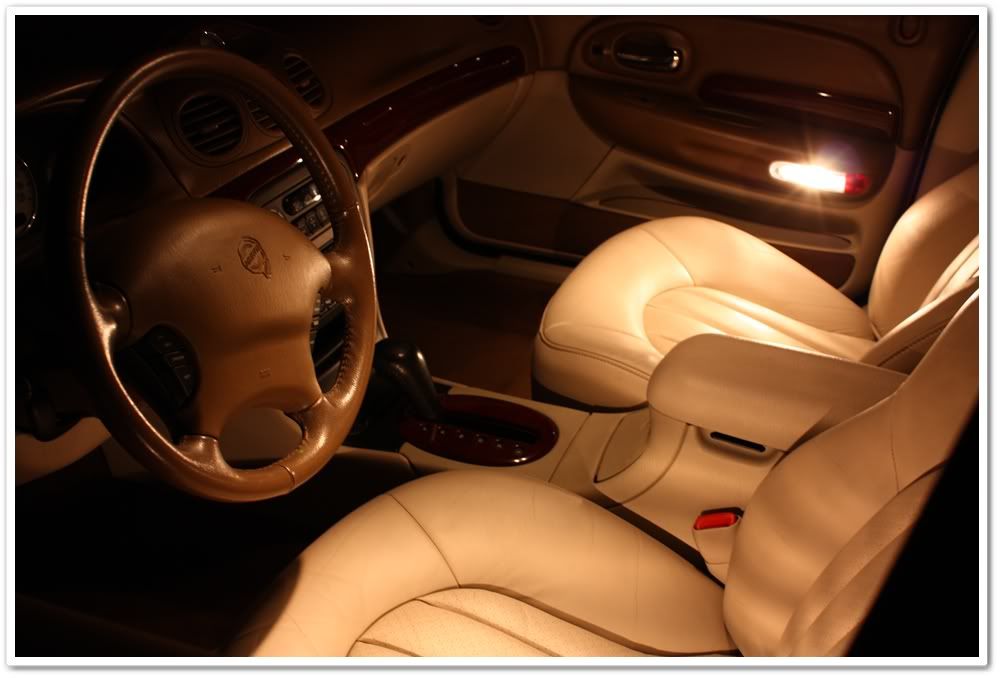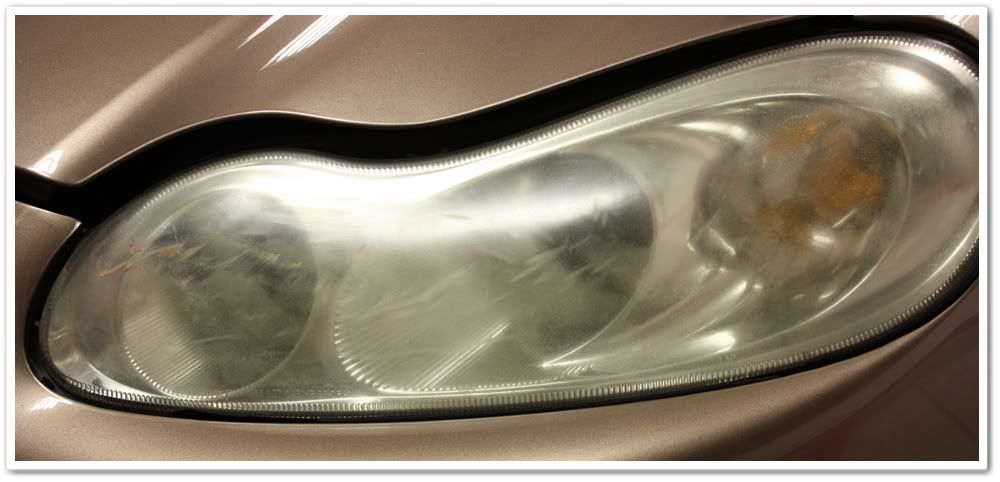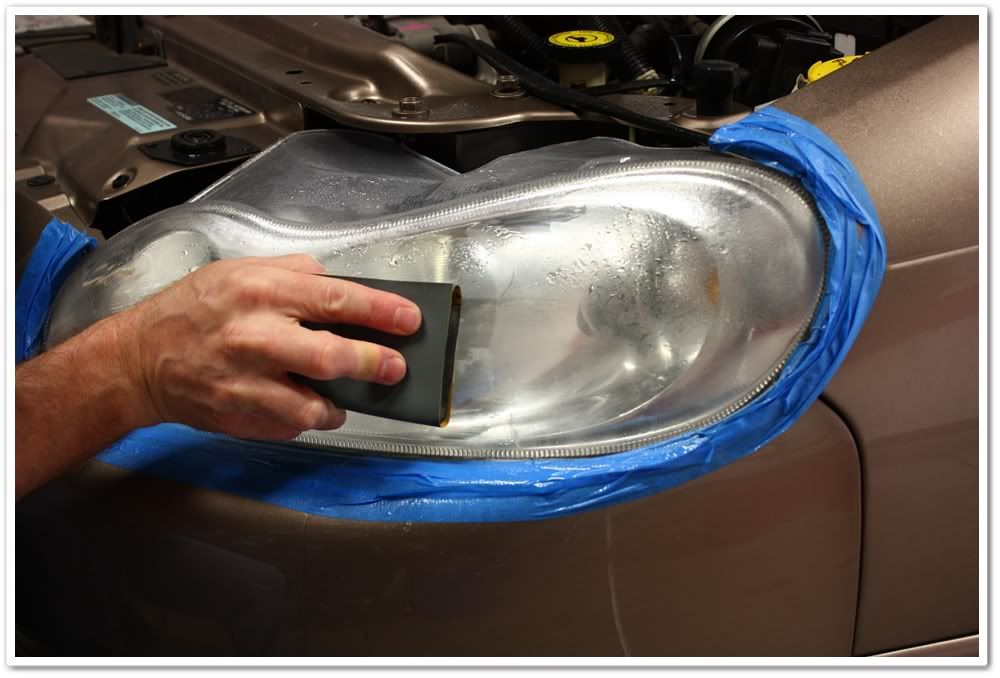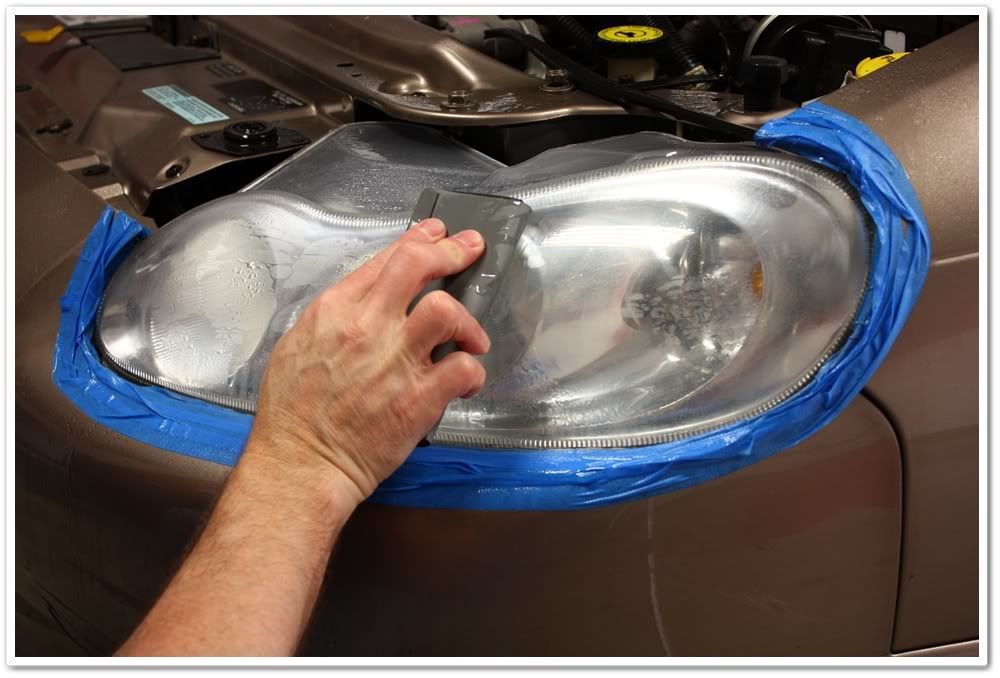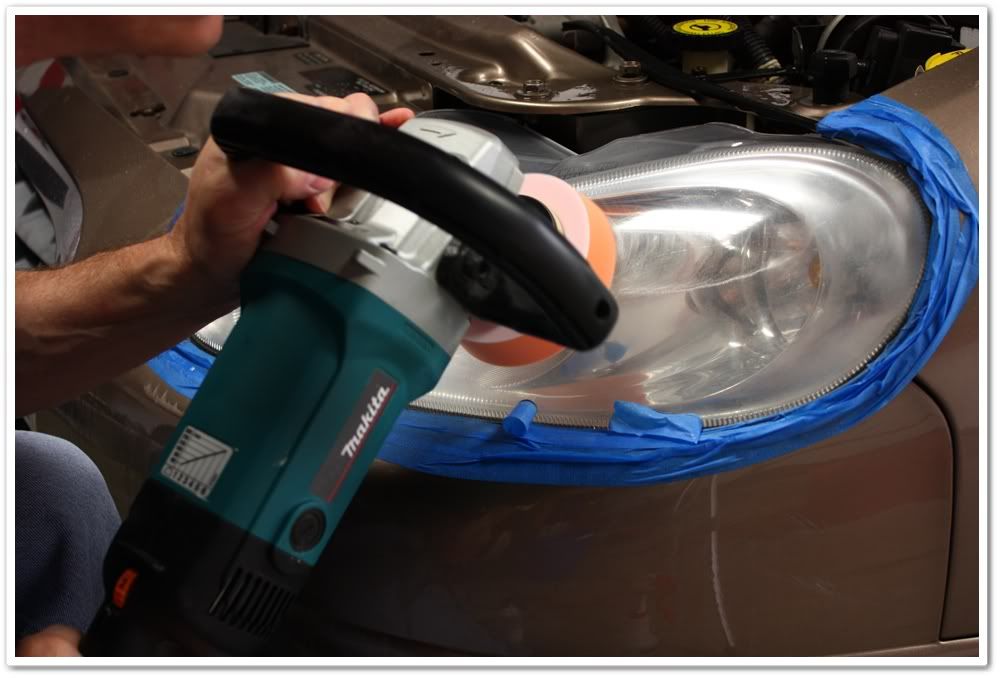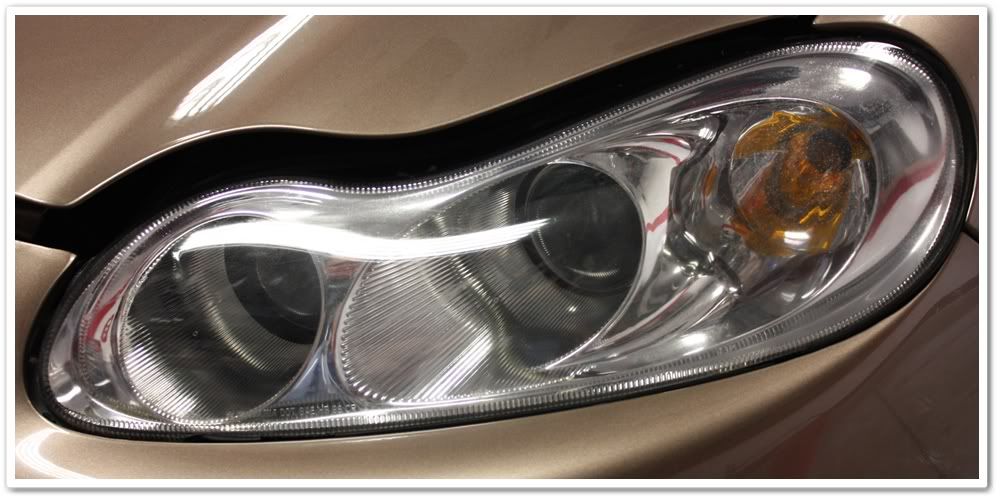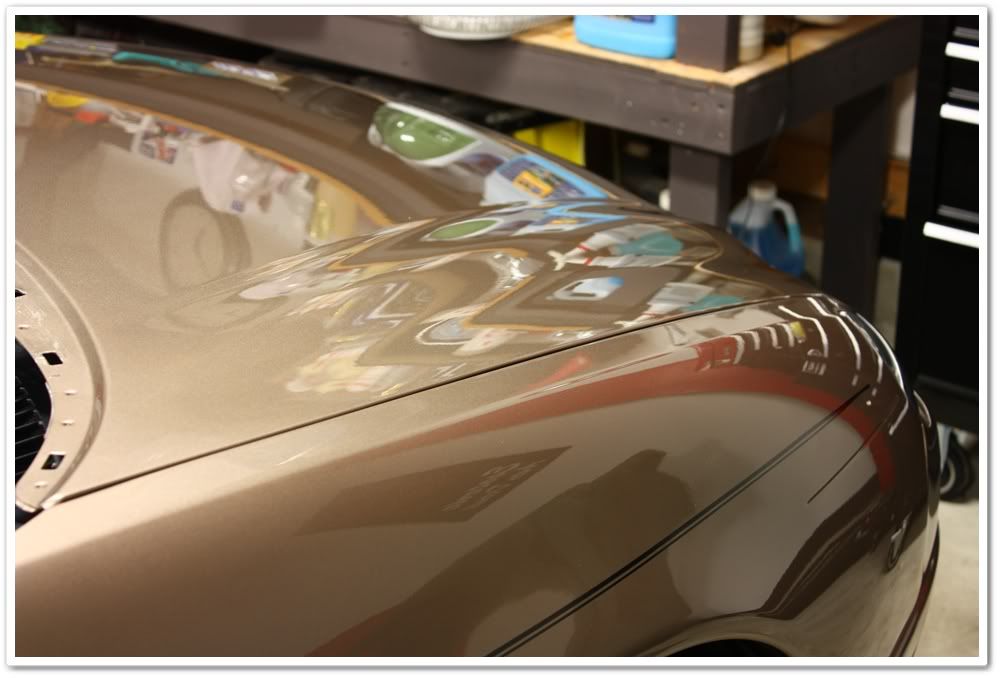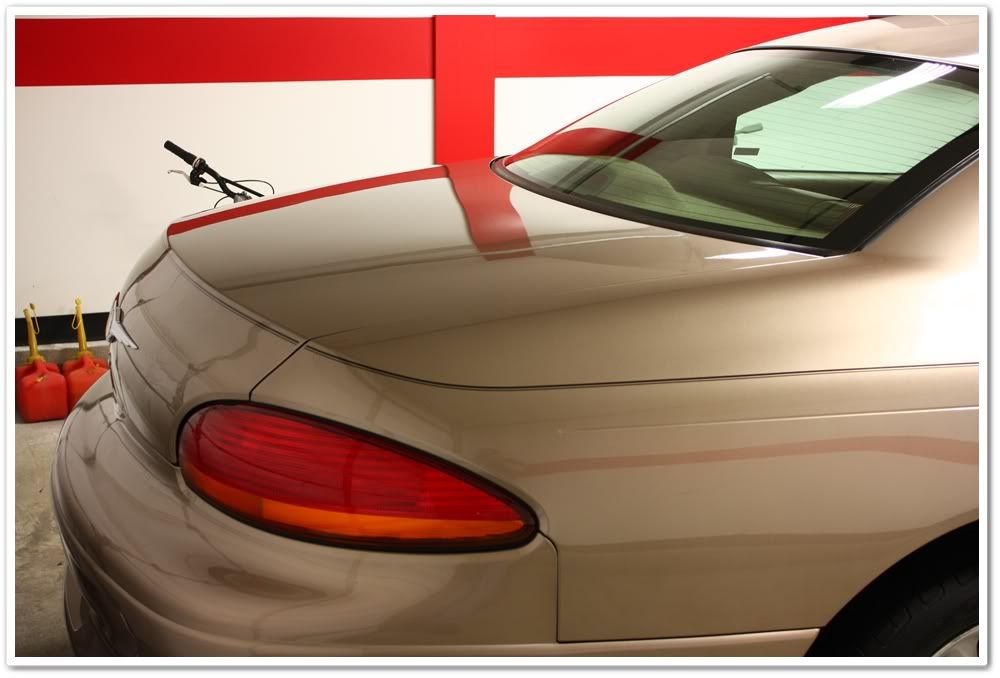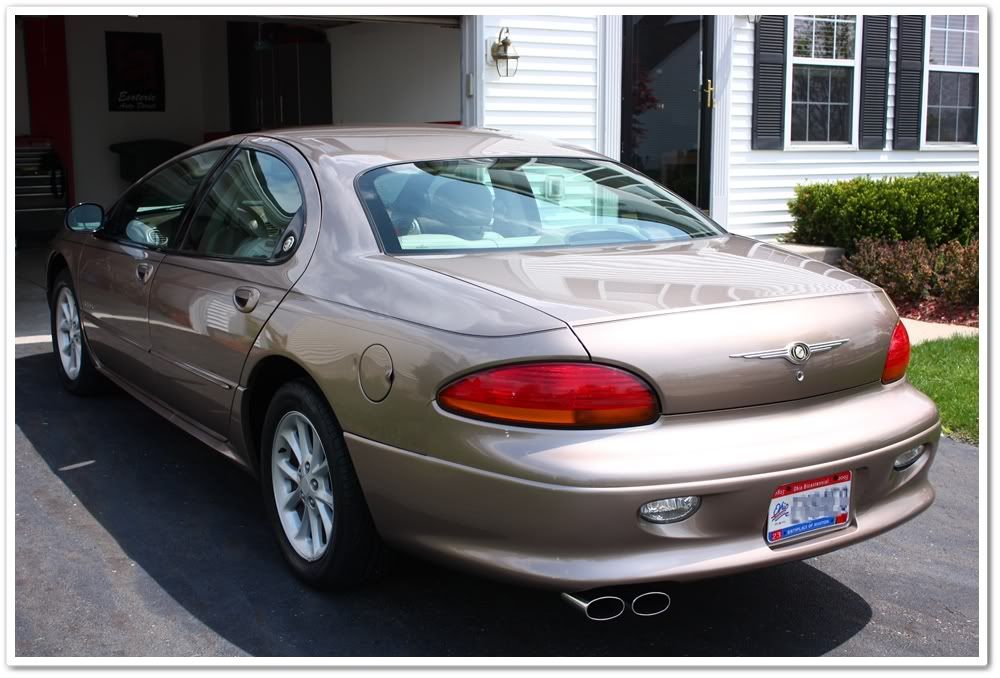Here we have a '99 Chrysler LHS that quite frankly has been a bit neglected for the past 10 years. The paint was in bad condition, but the customer simply wanted it cleaned up, protected, and shiny.
Their big concern was to bring the interior back to life, as well as repair one of the damaged headlights. I don't think that the leather had ever been cleaned, and it was showing a bit of wear. I saw this as a great opportunity to outline the processes of simple leather restoration, and to show the required steps for headlight repair.
First up was the leather interior. Even in a short period of time, light colored leather in particular starts to get soiled from dirt, grime, perspiration, airborne contaminants, etc. Without the occasional cleaning, this will build up over time making it quite difficult to remove. Since this vehicle probably was never cleaned, I knew it was going to require a lot of effort.
Given this, I decided to use Leatherique as it has always performed very well with the more challenging leather restoration jobs. Two products are actually used...Rejuvinator Oil and Prestine Clean. The Leatherique system works backwards compared to what you're normally used to. First you use the conditioner, and then you use the cleaner! Yes, it sounds counter-intuitive, but it works (well)!
For the before and after photos, I tried to use the exact same lighting and exposure so they are all accurate comparisons. I also do not use any post-processing either.
Here are a few “before� pictures showing the condition of the interior. As always, the driver's seat was the worst.
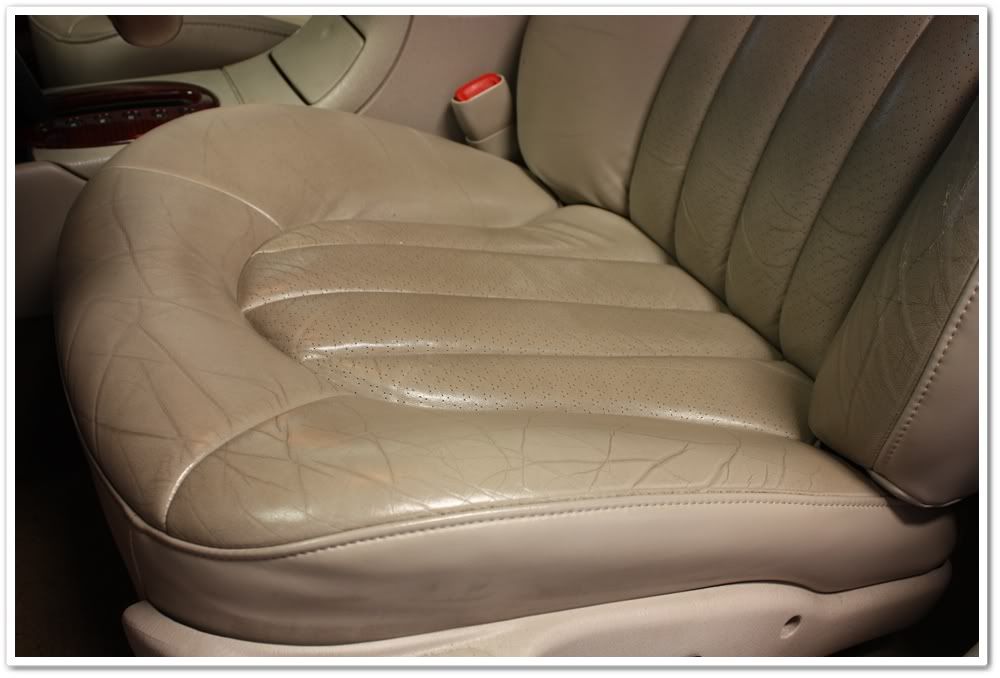
Here you can see that the lumbar support is actually cracking.
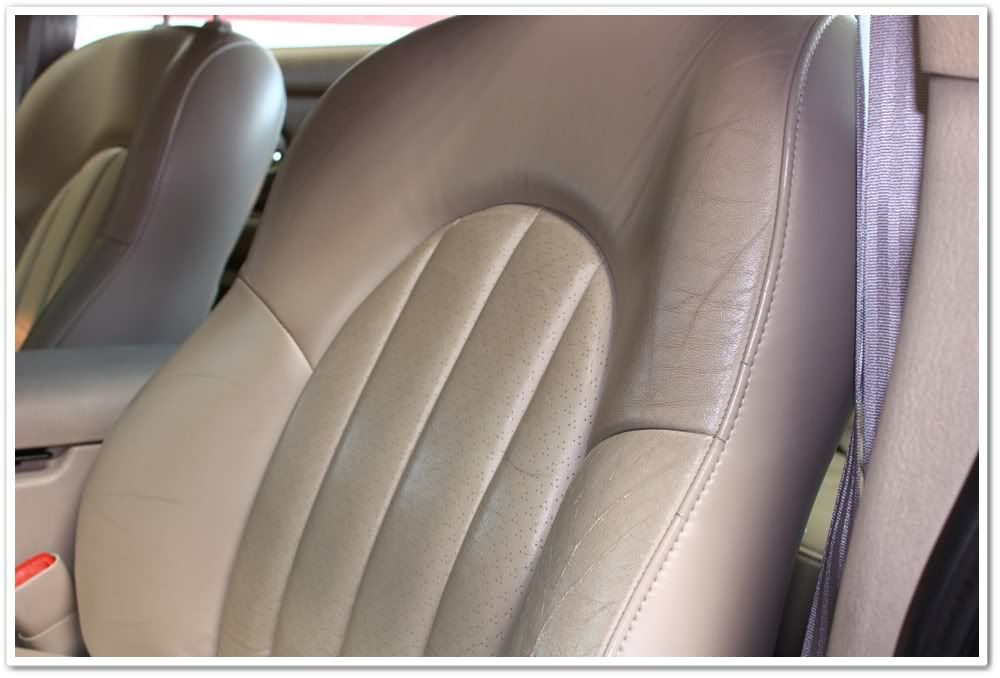
Passenger seat:
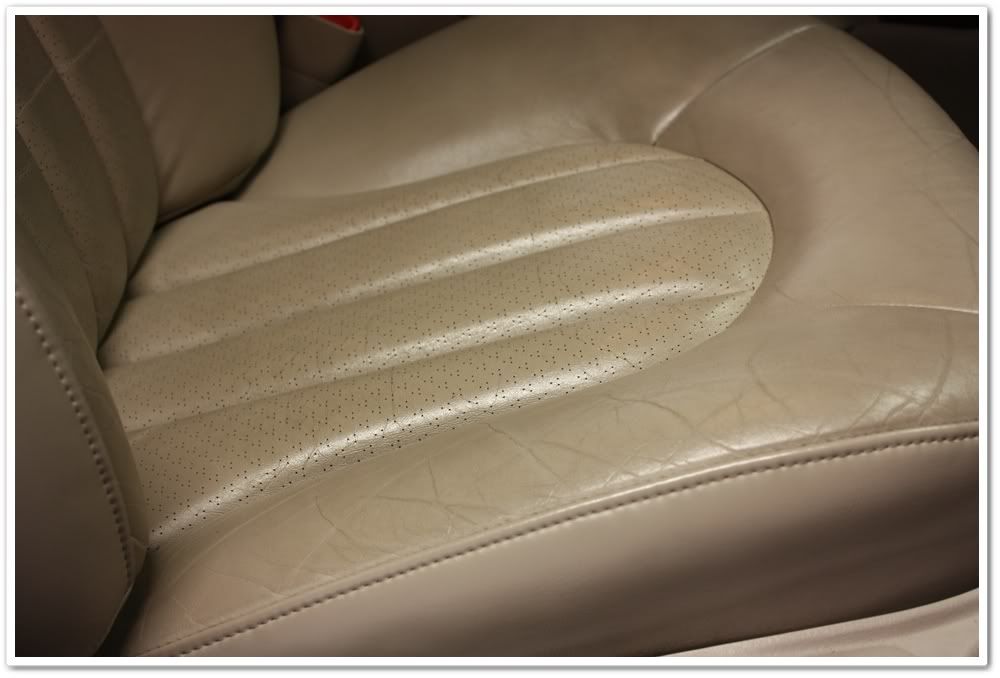
The first step in the process is to vacuum the surfaces to make sure all of the debris is picked up.
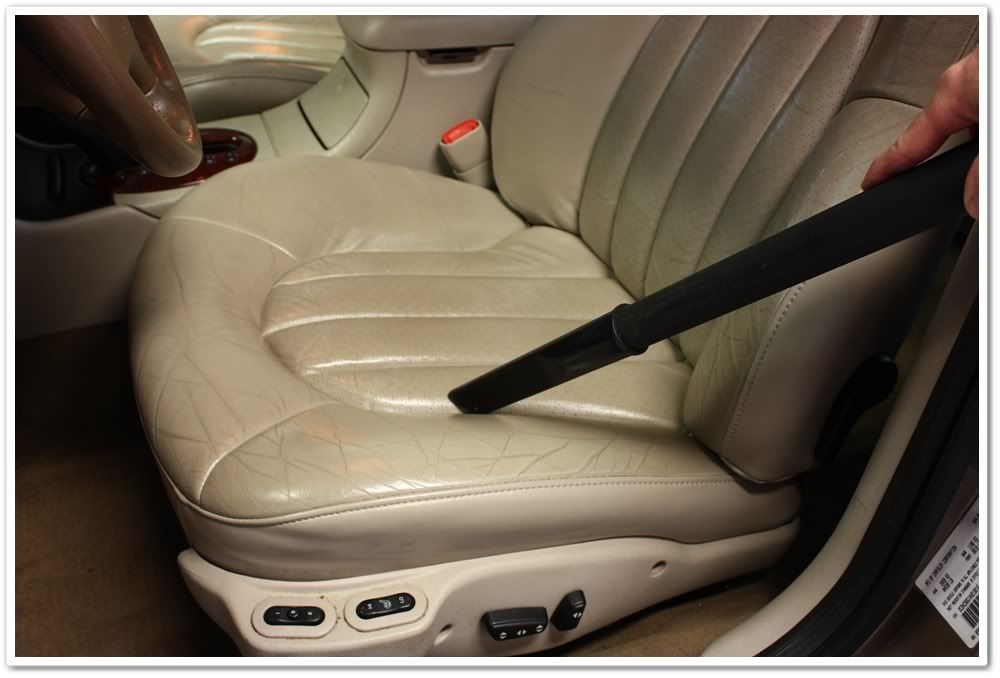
Here I have the Rejuvinator Oil and Prestine Clean ready to go. To make it easier, I utilize a spray nozzle on the Prestine Clean, and I put the Rejuvinator Oil in a small bowl and apply it with a foam brush. Leatherique recommends applying it with your hands so you can rub it in, but I find that I have much more control of the Oil when using the brush. When you're climbing in and out of the vehicle for this step, it's also nice not having it all over your hands where you could potentially get it everywhere.
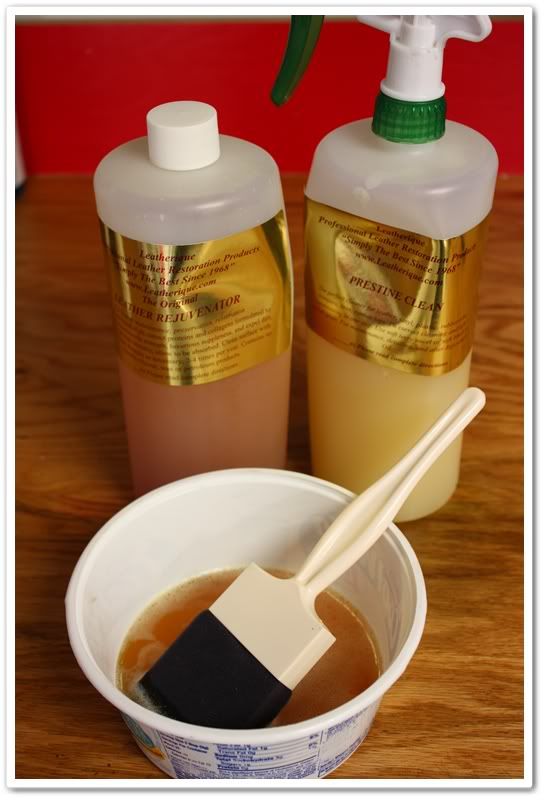
Here I am applying the Rejuvinator Oil. Be sure to get a thick coating everywhere, and work it into the stitching as well. After you're done applying the product, you could further work it into the surface, folds, seams, and stitching either with your hands or with a leather brush.
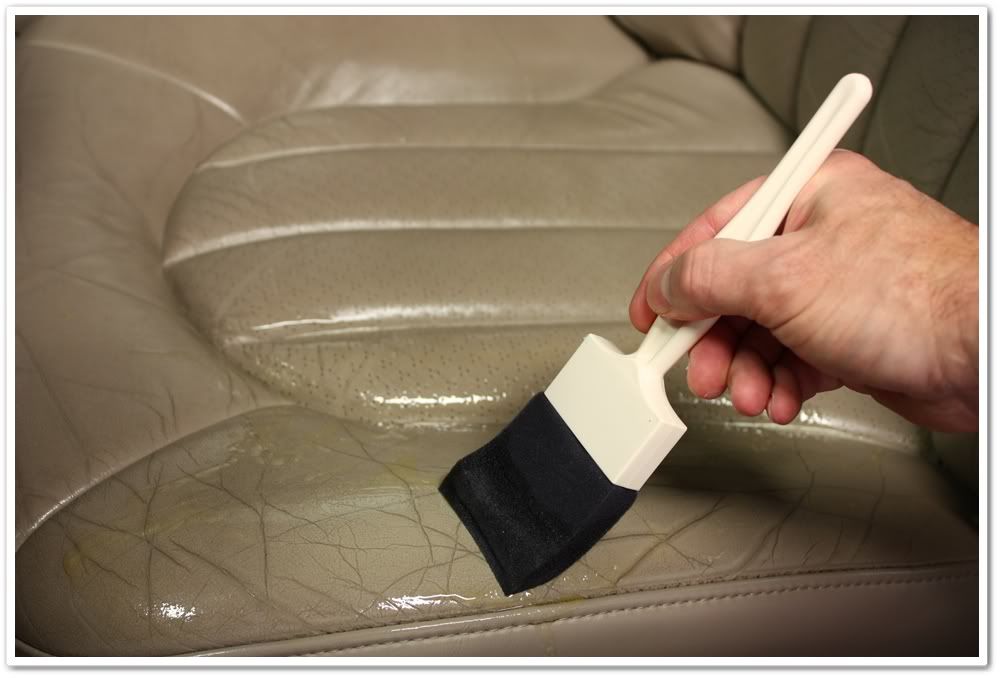
You can see where the seating surface is completely coated.
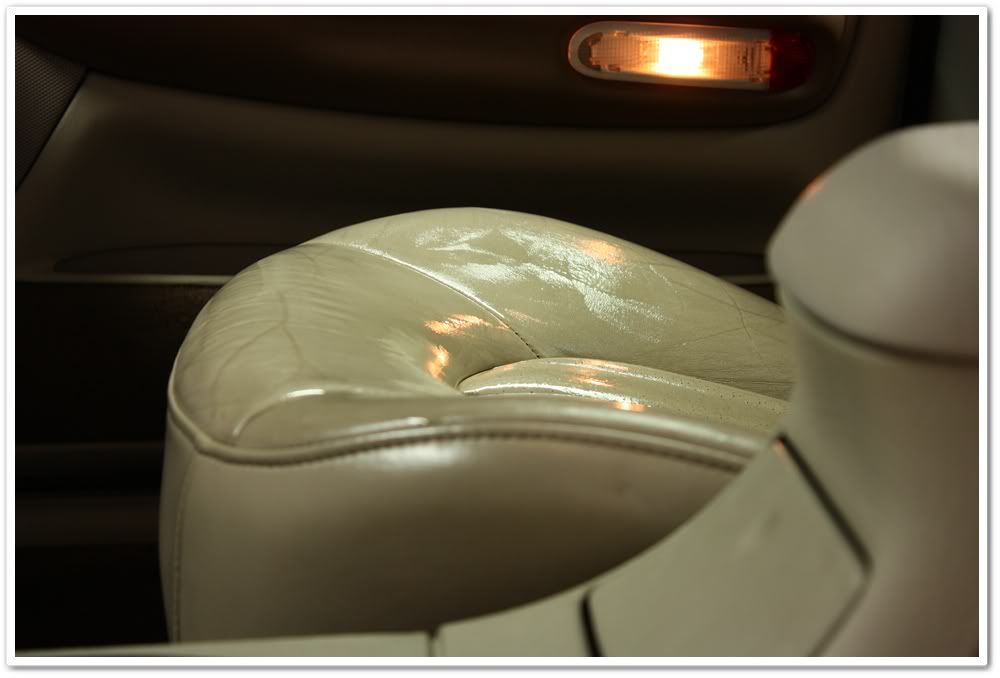
The Rejuvinator Oil works with time and heat. The best way to allow the product to work is to roll up the windows, and let the car sit outside in the sunshine for the day to create a steam room effect. During this time it conditions the surface (especially on non-coated leather), and brings all of the dirt, grime, salt, and other toxins to the top leaving a sticky or tacky finish before it's removed. I prefer to let it sit for about a 24 hour period. If it's cooler outside, you'll need to leave it on longer. You could cover the seats with plastic wrap and heat it up with a hair dryer (or drive around with the heater and seat warmers on!)
Here's a good tip. If you need the ability to pull the car in and out of the garage, then cut up a large plastic garbage bag and cover the seat. You won't have the worry of getting the Oil all over yourself, and the plastic won't remove it from the leather. Afterwards I wipe down the plastic, fold it up, and store it in the cabinet for future use.
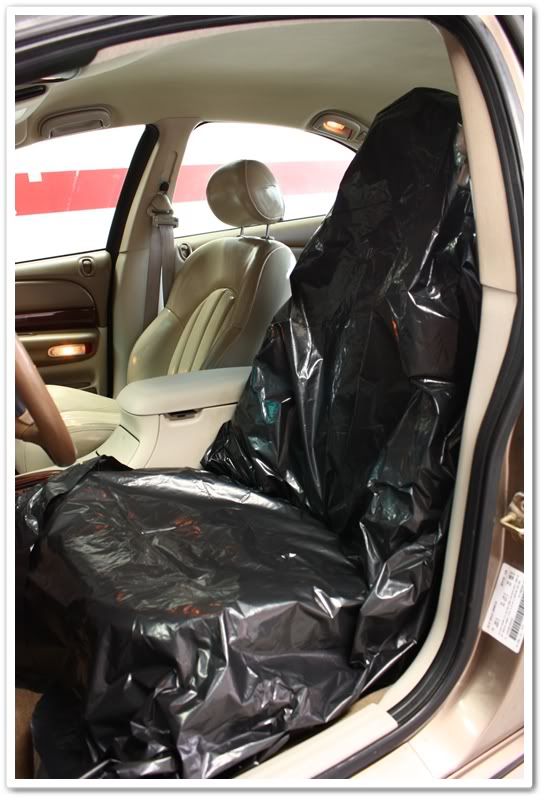
Their big concern was to bring the interior back to life, as well as repair one of the damaged headlights. I don't think that the leather had ever been cleaned, and it was showing a bit of wear. I saw this as a great opportunity to outline the processes of simple leather restoration, and to show the required steps for headlight repair.
First up was the leather interior. Even in a short period of time, light colored leather in particular starts to get soiled from dirt, grime, perspiration, airborne contaminants, etc. Without the occasional cleaning, this will build up over time making it quite difficult to remove. Since this vehicle probably was never cleaned, I knew it was going to require a lot of effort.
Given this, I decided to use Leatherique as it has always performed very well with the more challenging leather restoration jobs. Two products are actually used...Rejuvinator Oil and Prestine Clean. The Leatherique system works backwards compared to what you're normally used to. First you use the conditioner, and then you use the cleaner! Yes, it sounds counter-intuitive, but it works (well)!
For the before and after photos, I tried to use the exact same lighting and exposure so they are all accurate comparisons. I also do not use any post-processing either.
Here are a few “before� pictures showing the condition of the interior. As always, the driver's seat was the worst.

Here you can see that the lumbar support is actually cracking.

Passenger seat:

The first step in the process is to vacuum the surfaces to make sure all of the debris is picked up.

Here I have the Rejuvinator Oil and Prestine Clean ready to go. To make it easier, I utilize a spray nozzle on the Prestine Clean, and I put the Rejuvinator Oil in a small bowl and apply it with a foam brush. Leatherique recommends applying it with your hands so you can rub it in, but I find that I have much more control of the Oil when using the brush. When you're climbing in and out of the vehicle for this step, it's also nice not having it all over your hands where you could potentially get it everywhere.

Here I am applying the Rejuvinator Oil. Be sure to get a thick coating everywhere, and work it into the stitching as well. After you're done applying the product, you could further work it into the surface, folds, seams, and stitching either with your hands or with a leather brush.

You can see where the seating surface is completely coated.

The Rejuvinator Oil works with time and heat. The best way to allow the product to work is to roll up the windows, and let the car sit outside in the sunshine for the day to create a steam room effect. During this time it conditions the surface (especially on non-coated leather), and brings all of the dirt, grime, salt, and other toxins to the top leaving a sticky or tacky finish before it's removed. I prefer to let it sit for about a 24 hour period. If it's cooler outside, you'll need to leave it on longer. You could cover the seats with plastic wrap and heat it up with a hair dryer (or drive around with the heater and seat warmers on!)
Here's a good tip. If you need the ability to pull the car in and out of the garage, then cut up a large plastic garbage bag and cover the seat. You won't have the worry of getting the Oil all over yourself, and the plastic won't remove it from the leather. Afterwards I wipe down the plastic, fold it up, and store it in the cabinet for future use.


